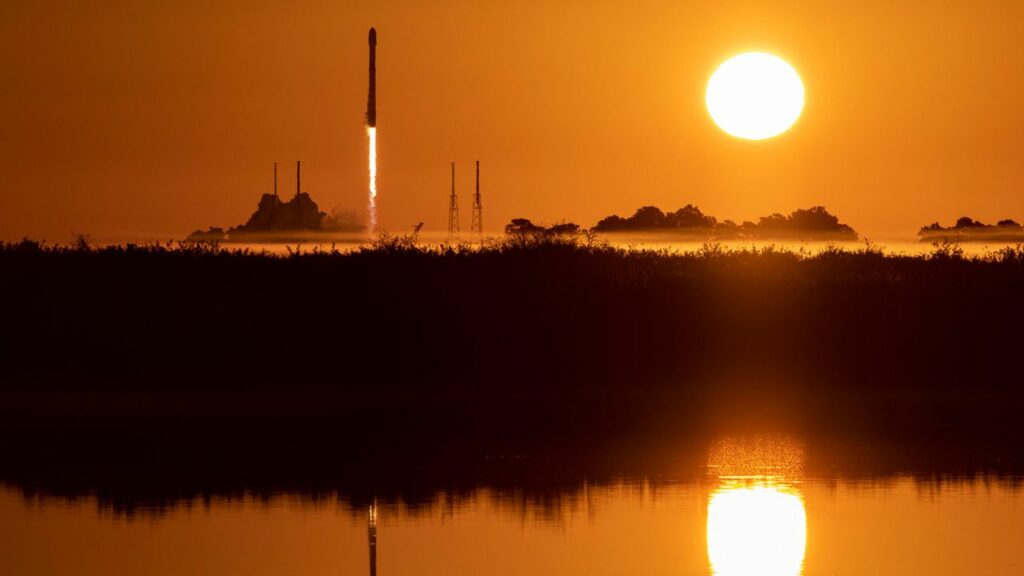SpaceX recently launched a new GPS satellite into orbit for the US military as part of its ongoing effort to expand the network of global positioning and navigation satellites that power numerous applications for smartphones, military operations, and other uses.
The SpaceX Falcon 9 rocket carrying the GPS satellite lifted off from Florida’s Cape Canaveral Space Force Station at 7:24 a.m. ET.
In a subsequent tweet with a video of the event, SpaceX confirmed that the satellite had been deployed.
The mission launched the sixth GPS III satellite of a new generation into an orbit where more than 30 GPS satellites are now active, at a height of around 12,550 miles (20,200 km).
The company’s website reads; “Space has become a more contested environment — with more-competitive adversaries.
“Our warfighters need enhanced capabilities to take on evolving threats. The need to return the focus on GPS as a ‘warfighting system’ has never been clearer.”
To pinpoint the exact location of objects on the ground, they continuously broadcast radio signals as they swing around the planet once every 12 hours or so.
With plans to construct up to 32 satellites, including the six that have launched since 2019, the next-generation GPS III satellites, developed by Lockheed Martin, will update that system.
Smartphones frequently use GPS services, but Lockheed Martin pointed out on its website that it also has military use.
In the late 1990s, the first GPS satellites of the preceding generation went into operation.
After the Falcon 9 rocket blasted off from Cape Canaveral and used up the majority of its fuel, the first stage—the sizable bottom-most component that provides the rocket’s initial thrust at liftoff—broke away from the rocket’s second stage and the satellite and descended to a precise landing on a platform in the ocean.
For SpaceX, who frequently recovers and reuses their rockets to reduce costs, it is a standard maneuver.
The first-stage rocket booster utilized on Wednesday had previously launched SpaceX’s Crew-5 mission, which sent four men to the International Space Station in October 2022.

